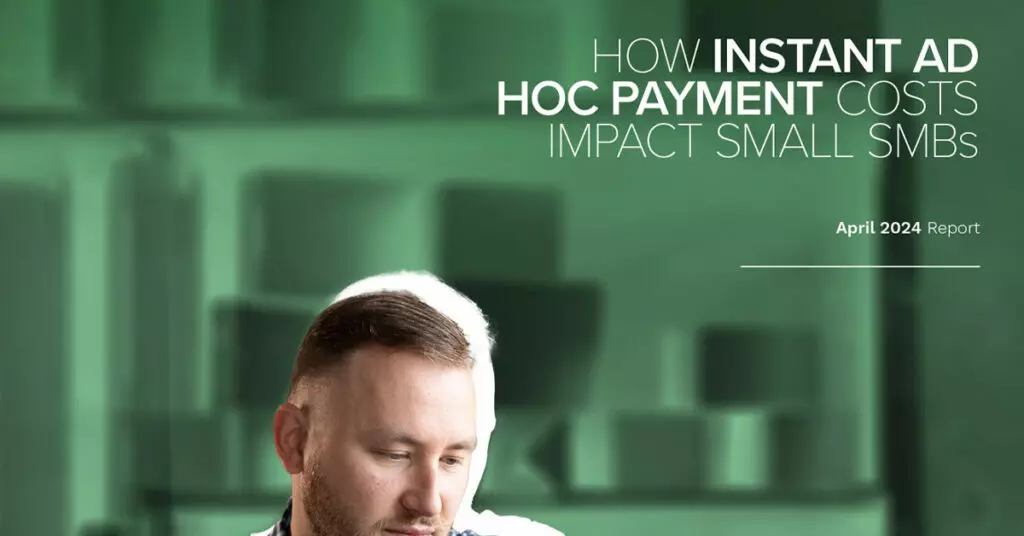Tipping can account for as much as 60% of a restaurant worker’s wages, so how and when those funds find their way into the worker’s hands can have a seismic impact on how they make ends meet and navigate their own financial lives.
Drew Edwards, CEO of Ingo Money, and Justin Roberts, co-founder and co-CEO of FinTech Kickfin, told PYMNTS’ Karen Webster that the “last mile” of restaurant payouts is due for a tech-driven overhaul.
As it stands now, roughly 90% of restaurants still disburse their tips to workers in cash — which sets up a regular routine of visits to the bank, day in and day out, in the morning and doling out cash at the end of the shift.
The issues are also compounded where, in hotel and quick-service restaurant (QSR) settings, credit card transactions dominate and tipping was always part of the equation, until now. Those tips are tougher to tally, collate and pay out at the end of every shift — and so they might be paid out in regular payroll cycles, which doesn’t meet the industry worker’s expectations.
That’s hardly efficient and maybe a bit of a surprise.
That’s because, as Roberts noted, “When you walk into a restaurant or engage with a hospitality brand, it’s always digital first.”
That’s not the case, as noted above, with the gratuities disbursements that go on in the proverbial back office. For the workers, there’s a bit of Catch-22 in place — they need to have funds in hand, but they cannot pay their own daily expenses in cash.
Not to mention the fact that walking around with fistfuls of cash can be dangerous as workers make their way to the bank.
Rethinking a Time-Honored Practice
To help address the pain points for restaurants and their employees, Kickfin, as an Ingo client, strives to remove the burdens of paying out tips — whether those tips are paid in cash or digitally, moving money directly to the employee’s bank or wallet of choice.
The tips themselves have been on the rise, fueled in part by a pandemic that has made us a bit more appreciative of workers in the service industries. The rise of the gig economy and restaurant delivery apps (which in turn pay out tips on an earned basis) has conditioned workers to expect faster access to their wages.
Roberts noted that his company’s internal estimates show that tips can add as much as $4 an hour to an employee’s average take-home pay. When done well, said Roberts, streamlining how workers get their tips can be a strategic advantage to attract and retain workers in a tight labor market.
“If you can provide a platform and a technology that can deliver a modern way for employees to get paid,” Roberts offered by way of example, “it lessens the challenge of paying for gas to get to and from work. These workers can be more financially stable.”
The eateries also benefit, relieved from the day-to-day operational challenge of managing cash.
Roberts said the timing is ripe for that digital overhaul, given the fact that so many of us have become adept at using digital services to pay bills — and we don’t necessarily want to wait around for the tips to be handed over, just to run to the bank and deposit the cash into an ATM.
Boosting Retention
Edwards contended that in the current environment, payments flexibility can be the critical determinant of whether a restaurant worker is going to opt to be paid digitally (into their bank account) or not.
“The more choices you offer, the better chance you’ve got of covering an option that will work for the individual who has been waiting on tables [and is used to cash every night],” said Edwards.
Edwards told Webster that from a payments standpoint, Kickfin stands among the money mobility firm’s fastest growing clients — and the restaurant industry and this use case, he said, is the perfect model for instant payouts, given the daily recurring need for disbursements. That also means there is less risk for fraud than an ad hoc payment.
Looking ahead, Edwards predicted that there are “logical” verticals adjacent to restaurants that are ready to digitize and make their tipping and payouts instant — including gambling venues, salons, and pretty much anywhere where cash is a critical component of getting staffers paid.
As Roberts stated, “You’re going to see many great companies come to market and do something very similar to the work that we’re doing. And we encourage it because there’s so much market share to cover due to the fact that again, 90% of hospitality outlets are still tipping in cash.”







